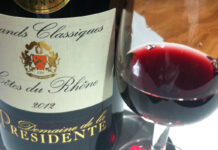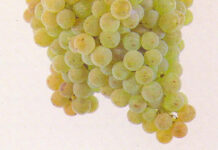Luke Richardson is the sommelier at wine bar Le Di-Vin in Edinburgh. In his column for SLTN he shares his thoughts on all things wine-related and answers your questions about wine. If you have a question for Luke email it to sltn@peeblesmedia.com

FOLLOWING on from my last column, this time I’ll recommend some different styles of Chardonnay at various price points that will sit comfortably on most lists.
For the lower end of the pricing scale, unoaked styles from France, Italy and Spain are fairly similar – perhaps a little fatter fruit in the southern parts of Italy and Spain, but generally on the greengage/apple/lemon fruit and light to medium-bodied. There’s a few exceptions, like Chablis in Burgundy and the high altitude wines of northern Italy, but I’ll go into those later.
The Languedoc in France is a good place to start for this crisper style, with decent wines available around £5.50 (plus VAT) and up. Italian and Spanish examples provide a touch more fruit and a little less acidity, and are around the same price. The aspects to look for are smooth fruit, refreshing acidity and a lack of metallic bitterness on the finish – this shows that there were enough grapes used in the production to make a high quality wine. These styles are good with salads, white meats or white fish.
Moving on to lightly oaked wines, these can be found in nearly every wine growing region. Referring back to last month’s column, here the main thing to consider is the style of fruit that you are looking for… leaner, greener wines from the cooler countries of Europe, or richer, riper wines from the New World.
One of the most popular styles currently is a kind of jack-of-all-trades from South Africa or South America. Here winemakers are often harvesting their grapes over a period of ten to 15 days, taking slightly unripe grapes first, then perfectly ripe grapes, and finally a few sugar-loaded over-ripe grapes. This allows them to deliver fresh crisp flavours on the front, a nice fleshy palate in the middle with some subtle oak flavours in the finish.
If you are to have only one Chardonnay on your list, this is it – expect to pay £6 to £8 (plus VAT) for a decent example – I prefer Chile for this style currently, but there are some great examples from South Africa too. As far as food goes, think chicken in creamy sauce and richer fish dishes.
Lastly, the richest style of Chardonnay – the heavily oaked, rich, chunky Chardonnays that were so popular in the early ’90s but faced a backlash in the late ’90s, prompting the ABC phrase – Anything But Chardonnay!
Thankfully, this style is coming back into popularity.
Normally at a slightly higher price point, but also a higher quality of product, California has made a name for itself with this style – ripe melon, nuts, butter and hints of toast are common flavours to find here, but expect to get little change out of £10 (plus VAT) for a good example. Argentina also produces some good heavily-oaked examples, as does New Zealand, and, although not as rich or mellow as the Californian examples, they can be a couple of quid cheaper.
Next month, I’ll look at Burgundy, the spiritual home of the grape, where all these different styles can be found within a stone’s throw of each other. Until then, happy hunting!




















